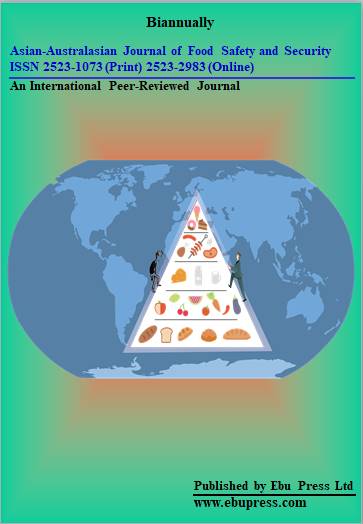Md. Rayhan Hossain, Md. Nahiduzzaman, Md. Rezwanul Karim, Md. Tanvir Rahman, Md. Abdus Salam and Md. Shafiqur Rahman
Aquaponics, an integrated system combining hydroponics and aquaculture, has the potential to serve as a sustainable food production method. This study was conducted over 45 days, from July 1, 2019, to August 15, 2019, in Doshaid, a peri-urban area of Savar, Dhaka, Bangladesh, to evaluate the comparative productivity of different aquaponics systems and traditional agriculture. The study assessed the growth performance of tilapia (Oreochromis niloticus) and vegetable production in deep water commercial aquaponics, deep-water small-scale aquaponics, and media bed aquaponics, comparing these systems with conventional farming. Additionally, water quality parameters and the benefit-cost ratio (BCR) of the three aquaponics systems were analyzed in comparison to traditional agriculture. Juvenile tilapia, with an initial size of 8.12 ± 1.11 cm and 20.22 ± 0.30 g in deep water commercial aquaponics, 8.15 ± 0.12 cm and 20.35 ± 0.13 g in deep water small-scale aquaponics, and 8.16 ± 0.13 cm and 20.45 ± 0.14 g in media bed aquaponics, were stocked at a density of 100 fish/m³. The fish were fed a commercial floating pellet diet at 5% of their body weight. The highest survival rate and total fish production were observed in deep water commercial aquaponics (90.12 ± 1.40% survival, 7.40 ± 0.10 kg/m³ over 45 days), followed by deep water small-scale aquaponics (85.23 ± 2.15% survival, 6.20 ± 0.10 kg/m³), and media bed aquaponics (80.14 ± 1.40% survival, 5.40 ± 0.10 kg/m³). The feed conversion ratio (FCR) of tilapia was recorded as 1.20 ± 0.15, 1.30 ± 0.12, and 1.40 ± 0.12 for the three systems, respectively. Water spinach yield varied across treatments, with average yields of 1.51 ± 1.12 kg/m², 1.31 ± 1.15 kg/m², 1.65 ± 1.05 kg/m², and 1.80 ± 1.05 kg/m² for different stocking densities (T1, T2, T3, and T4). The highest vegetable yield was recorded in T4. Additionally, better gross return, net return, and BCR were observed in T1, T2, T3, and T4, respectively. These findings suggest that aquaponics, particularly when optimized for stocking density and sustainability, can outperform traditional aquaculture systems in terms of fish production. Aquaponics thus represents a promising and sustainable alternative to conventional aquaculture and agriculture.


